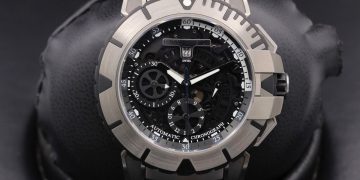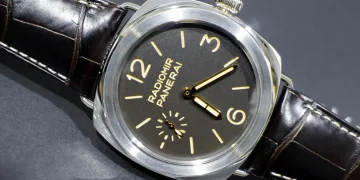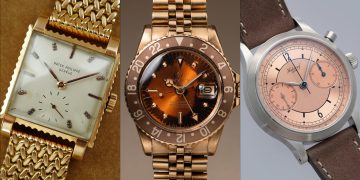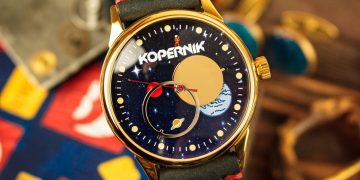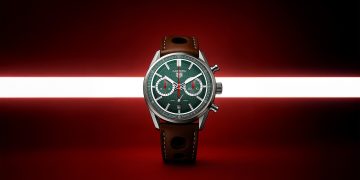Introduction: What Makes Perpetual Calendar Watches So Special?
Perpetual calendar watches are one of the most intricate and fascinating types of timepieces in the world of horology. They represent the epitome of watchmaking craftsmanship and precision, offering a feature that adjusts automatically for months with varying days and even leap years. But why do these watches command such respect and admiration? And what makes them so significant in the history of watchmaking? This article will explore the origins, the legacy, and the brands that have shaped the world of perpetual calendar watches, shedding light on why they continue to captivate collectors and watch enthusiasts alike.
1. The Beginnings of Perpetual Calendar Watches: How Did It All Start?
To understand the significance of perpetual calendar watches, we first need to go back in time. Before mechanical watches could account for the complexities of the calendar, timepieces were simple instruments. Early clocks could mark the hours, minutes, and seconds, but there was no real way to deal with variations in the days of the month or leap years. It wasn’t until the rise of more advanced watchmaking that complications like the perpetual calendar were introduced.
- The Need for Calendar Adjustments
The concept of the calendar has evolved over centuries, from the lunar cycles used by ancient civilizations to the more modern Gregorian calendar. With the advent of the mechanical watch, it became clear that timekeeping couldn’t be left to chance, especially when it came to the months with 28, 30, or 31 days, and the addition of leap years. Watchmakers sought ways to create a timepiece that could handle these complexities automatically. - Early Innovations
The first recorded use of the perpetual calendar complication was in the 19th century, with a key milestone being made by the legendary Swiss brand Patek Philippe. Their 1925 pocket watch with a perpetual calendar movement made them one of the leaders in advancing mechanical complications.
2. The Legacy of Perpetual Calendar Watches: The Icons of the Industry
While Patek Philippe often takes center stage in discussions of perpetual calendar watches, they’re not the only brand responsible for this innovative complication. Several high-end brands have played a role in refining, innovating, and popularizing the perpetual calendar design.
- Patek Philippe: The King of Complications
Known for creating some of the finest watches in the world, Patek Philippe truly perfected the perpetual calendar. They introduced their Calatrava model in the 1930s, which quickly became iconic due to its combination of simple elegance and technical complexity. Their Caliber 240 Q, introduced later, is considered a breakthrough in perpetual calendar movements. Patek’s watches represent the highest standard of luxury and craftsmanship. - A. Lange & Söhne: German Engineering Meets Luxury
The German brand A. Lange & Söhne is another significant player in the world of perpetual calendar watches. Their Lange 1 Perpetual Calendar (introduced in 2001) was an instant success, featuring an asymmetric design and a technical movement that combined German precision engineering with traditional Swiss watchmaking. Their watches are known for their high-level craftsmanship and technical mastery. - Vacheron Constantin: Tradition and Innovation
As one of the oldest continuous luxury watchmaking houses, Vacheron Constantin has played a crucial role in advancing the perpetual calendar complication. Their Traditionnelle Perpetual Calendar is a prime example of a modern perpetual calendar that maintains a classical design. Vacheron was one of the first brands to mass-produce a perpetual calendar movement. - Other Brands: Expanding the Perpetual Calendar Horizon
Brands like Jaeger-LeCoultre, Breguet, and even Rolex have developed their own perpetual calendar models, each adding their unique touch. Rolex, known for its sporty and durable watches, surprised many with the release of its Rolex Day-Date, which incorporates an automatic day and date feature, albeit not a full perpetual calendar. Still, its introduction into the market helped to raise awareness of calendar complications among broader audiences.
3. The Art and Craft Behind Perpetual Calendar Movements
The perpetual calendar movement is one of the most complicated pieces of horological machinery. So, what exactly goes into crafting these watches? How do these watches manage to keep perfect track of months, days, leap years, and even moon phases?
- The Complexity of the Mechanism
At the heart of every perpetual calendar watch is the movement—an intricate system of gears, levers, cams, and springs. The movement must account for all the variations in the calendar, and it does this by adjusting the date automatically at the end of each month, depending on the number of days. Every four years, it adjusts for the leap year, which means an extra day in February. - Manual vs. Automatic Adjustments
One of the most remarkable aspects of these watches is that they need little to no manual adjustment. While standard calendar watches require users to reset the date, a perpetual calendar doesn’t need to be adjusted, even if it’s left unworn for months (although, like all watches, they will need to be wound regularly to maintain accurate timekeeping). - Materials and Design
Beyond the technical side of the mechanism, perpetual calendar watches are also works of art. High-end brands employ skilled watchmakers to decorate and finish movements with techniques such as Côtes de Genève (a decorative pattern on the movement), perlage (a fine circular pattern), and anglage (polishing edges to a mirror finish). These small touches are what elevate these watches to works of mechanical art.

4. Perpetual Calendar Watches in Modern Times
The history of perpetual calendar watches is rich, but how have they evolved into the modern era? Today, we see more and more innovations surrounding these watches, even as the classic designs remain unchanged.
- Modern Features in Classic Designs
New features, like silicon escapements, shock resistance, and improved water resistance, have been incorporated into perpetual calendar models without compromising their heritage. Some brands have even added moon phase complications, dual-time zones, and retrograde date displays to enhance the function of these already complex timepieces. - Luxury and Status Symbol
In today’s world, perpetual calendar watches aren’t just tools for telling time—they’re status symbols. Owning a Patek Philippe or a Lange & Söhne perpetual calendar is as much about showing off a piece of history and craftsmanship as it is about accurate timekeeping. These watches are sought after by collectors, investors, and enthusiasts, often fetching millions at auctions. - Sustainability and Innovation
As luxury watchmaking continues to evolve, sustainability has become a key issue. While the mechanics of a perpetual calendar are inherently long-lasting, brands are increasingly exploring eco-friendly materials and ethical sourcing of raw materials to appeal to a more environmentally conscious market.
5. Why Perpetual Calendar Watches Continue to Captivate Collectors
Despite being complex and expensive, perpetual calendar watches remain incredibly popular among watch collectors. Why? For many, it’s the sheer technical challenge and engineering marvel that these watches represent. There’s a sense of appreciation for the mechanical ingenuity required to create such a timepiece. For others, it’s the luxury and prestige that owning a perpetual calendar can convey.
- Collectors and Investors
High-end perpetual calendar watches, especially limited edition models, have become prized possessions in the world of luxury watch collecting. As with other luxury collectibles, their rarity and craftsmanship mean that they tend to appreciate in value over time, making them great investments for collectors. - A Personal Connection to Time
Finally, for many, owning a perpetual calendar watch is about more than just owning a piece of luxury. It’s a way of connecting to the centuries-old tradition of mechanical timekeeping, a way of holding onto time itself in a world that is increasingly digital and fleeting.
Conclusion: What Makes Perpetual Calendar Watches Timeless?
Perpetual calendar watches are more than just timepieces; they’re symbols of craftsmanship, innovation, and tradition. From their humble beginnings in the 19th century to their status as some of the most revered watches in the world today, these timepieces have remained a central feature in the world of horology. While trends may come and go, the legacy of perpetual calendar watches continues to endure—an enduring testament to the art of watchmaking.



